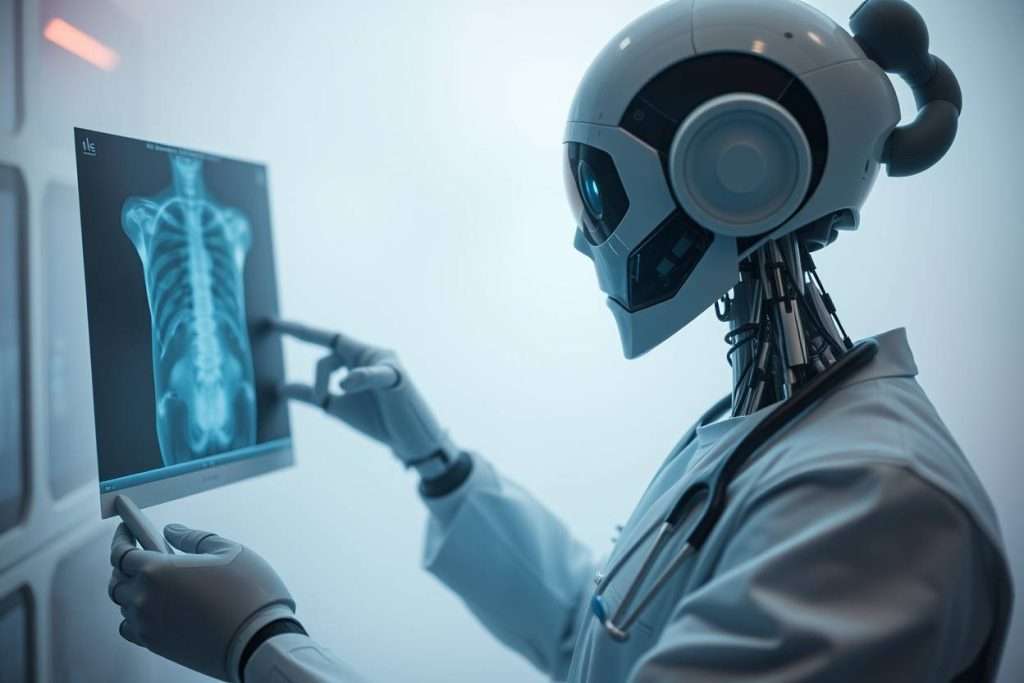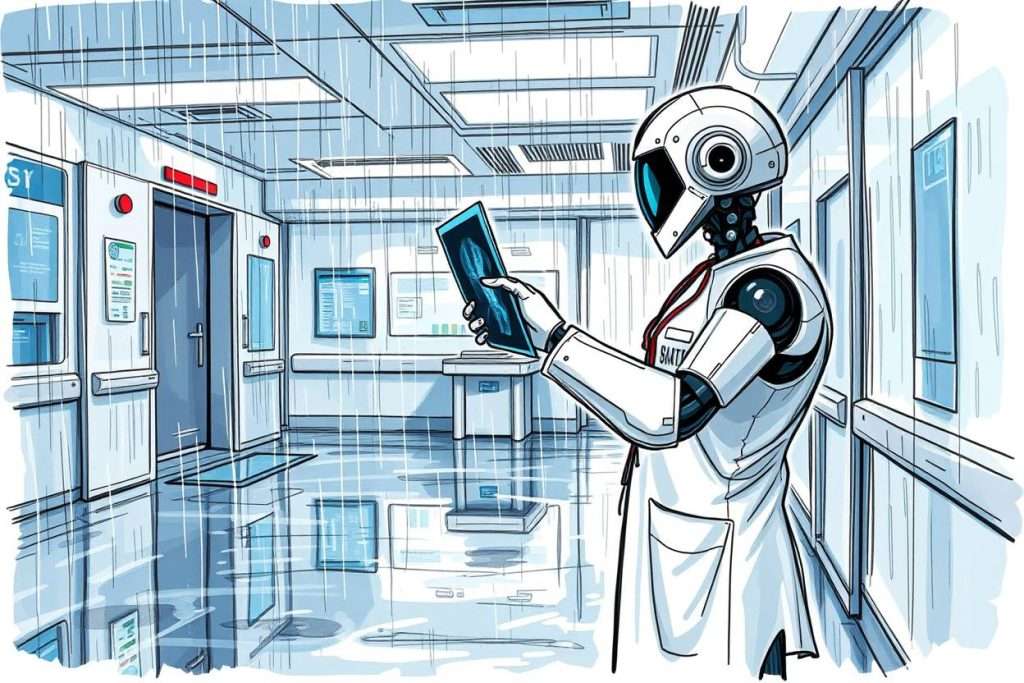The Role of Artificial Intelligence in Medical Imaging Analysis: From Detection to Diagnosis

Medical imaging sits at the core of healthcare decision-making. X-rays, CT scans, MRI, PET, and ultrasounds enable doctors to visualize internal organs, detect abnormalities, monitor disease progression, and tailor individual treatments.
In 2025, artificial intelligence (AI) is fast-changing how these images are processed and interpreted, driving progress from detection to diagnosis and raising standards of care worldwide. This article explores the evolving impact of artificial intelligence in medical imaging analysis—unpacking recent advancements, highlighting new medical imaging software, and examining industry trends that are shaping the future of diagnostics.
How AI Analyzes Medical Images
AI analyzes medical images using deep learning: complex algorithms trained on millions of scans to recognize subtle patterns invisible to the human eye. These systems work across all major imaging modalities:
- In CT and MRI, AI can segment organs, detect lesions, and flag abnormalities automatically.
- For X-rays and PET scans, algorithms classify tissue changes and help catch early signs of disease.
- In ultrasound, AI improves speed and accuracy by filtering noise and highlighting relevant anatomy.
A key advancement is AI-powered triage. Automated systems review images and prioritize urgent cases, alerting clinicians when rapid action is required. This workflow optimization translates to faster reporting, less clinician fatigue, and improved outcomes for conditions where speed is critical (e.g., stroke, trauma).
AI-driven image annotation and measurement tools also streamline repetitive clinical tasks, reducing the time radiologists spend labeling images and allowing them to focus on complex cases.
Latest Innovations and Developments (2025)
Several AI technologies now stand out as benchmarks in medical imaging software:
- FDA-Cleared Detection Systems: Solutions such as JLK’s stroke detection AI have reached sensitivity rates above 98%, swiftly identifying hemorrhages and enabling life-saving interventions. Such tools are integrated directly into hospital workflows, flagging urgent findings and reducing diagnostic delays.
- Hybrid and 4D Imaging Modalities: AI powers PET/MRI fusion and 4D Flow MRI. These tools visualize dynamic processes—blood flow, organ movement—in real time, capturing data at greater speed and with greater detail than ever before.
- Spectral Photon-Counting CT: This innovation allows differentiation of tissues and contrast agents within a single scan. AI algorithms process spectral data to characterize lesions more accurately and minimize unnecessary repeat imaging.
- Predictive Analytics: Machine learning models analyze serial scans to track disease evolution, forecast progression, and support treatment decision-making. These predictive features are now embedded in leading medical imaging software suites.
Such advances are making detection quicker and more reliable, reducing human error, and opening new possibilities for personalized care.
Detection to Diagnosis: Deep Learning in Practice
Deep learning models have evolved beyond detection—they now support disease classification, risk stratification, and longitudinal patient tracking:
- Tumor segmentation and cancer grading are performed automatically, matching or exceeding expert-level accuracy.
- Multimodal models integrate radiology images, digital pathology slides, and even genomics to provide comprehensive diagnoses.
- AI helps measure subtle changes across time, identifying recurrence or progression earlier than manual review alone.
Studies show that AI’s accuracy rates for identifying cancers such as breast, prostate, lung, and colorectal are on par with—or better than—senior radiologists in prospective clinical trials. Automated systems also deliver consistent, reproducible results, minimizing inter-observer variability and enabling broader access to high-quality care.
Integration with Pathology
A major shift is the merging of medical imaging and pathology. AI can correlate features between whole-slide pathology images and radiology scans, giving clinicians multi-layered insights that were previously unavailable.
- For example, the CAPAI model combines H&E slide results with imaging data to predict cancer recurrence in colorectal patients.
- AI systems create direct links between tissue samples and imaging findings, supporting higher accuracy in cancer detection and grading.
This integration helps clinicians catch diseases that might be missed if either modality is reviewed in isolation—especially valuable for complex and early-stage cancers.
Improving Diagnostic Accuracy and Clinical Impact

Recent clinical results show that AI improves diagnostic accuracy across several high-burden diseases:
- In breast and prostate cancer, AI systems help detect subtle regions of interest, grade tumors, and guide further testing.
- For lung and colorectal cancer, AI-enabled imaging software identifies abnormal patterns and supports risk forecasting.
Automated reporting and workflow tools lead to faster clinical turnaround and higher consistency. Many hospitals now rely on AI to flag cases needing review and to forecast disease progression—resulting in more targeted follow-up and personalized patient management.
Darly Solutions: Story, Features, and Capabilities
Darly Solutions is a specialist in medical imaging software development. Founded with a mission to empower health systems through advanced technology, Darly Solutions delivers custom platforms that integrate AI, machine learning, and cloud infrastructure for medical imaging and digital pathology.
Core Features:
- Deep Learning Models: Darly Solutions leverages proprietary and industry-leading AI models for automated image analysis, tissue segmentation, and diagnostic support across CT, MRI, X-ray, PET, and ultrasound.
- Interoperable Workflows: The company’s medical imaging software connects seamlessly with hospital IT systems—electronic health records (EHRs), pathology labs, and telemedicine portals—allowing for centralized data management.
- Automated Reporting and Triage: Darly’s solutions can prioritize cases, generate preliminary findings, and flag urgent conditions, reducing reporting times and boosting efficiency.
- Predictive Analytics: Advanced predictive features enable clinicians to forecast disease outcomes and plan targeted interventions.
- Security and Compliance: Platforms are designed to meet global standards including HIPAA, GDPR, FDA, ISO, HL7, and FHIR for privacy and interoperability.
- Cloud-Based Collaboration: Darly’s cloud architecture enables remote access, secure image sharing, and multi-location clinical collaboration.
- Custom Integrations: Darly Solutions adapts its software to unique hospital requirements—whether for radiology, oncology, or large-scale diagnostic networks.
Impact:
Hospitals and clinics using Darly Solutions benefit from improved diagnostic speed and accuracy, more consistent reporting, and streamlined care delivery. These systems free up clinicians to focus on complex cases, while routine findings and measurements are handled automatically.
From initial detection to complex diagnosis, Darly Solutions’ medical imaging software is designed for adaptability—helping medical teams keep pace with rapid technological change and rising clinical demands.
Challenges and Future Directions
Despite rapid progress, several challenges remain for AI in medical imaging analysis:
- Data Quality and Diversity: Robust AI performance relies on diverse, high-quality training data; gaps here can limit accuracy, especially for rare conditions.
- Regulatory Approval: Navigating global regulations, demonstrating safety, and sustaining clinical validation are ongoing hurdles.
- Interpretability: Transparent decision-making is key—clinicians need clear explanations for AI-driven findings to build trust.
- Integration Complexity: Large-scale health systems require seamless interoperability; custom integrations must be reliable and secure.
Looking forward, AI will expand its capabilities by integrating genomics, digital biomarkers, and real-time decision support. Fully collaborative diagnostic ecosystems—where radiology, pathology, and clinical labs work from unified platforms—are anticipated by 2030. Darly Solutions is committed to advancing these technologies, aiming for more automated, data-driven health care.
Conclusion
Artificial intelligence is reshaping medical imaging analysis. Automated detection is faster, diagnosis is more accurate, and integrated tools bridge radiology with pathology for a comprehensive view of patient health. New medical imaging software solutions—including those from Darly Solutions—are helping healthcare teams deliver better, more consistent care. As AI advances, these technologies will make accurate, personalized diagnosis accessible to more patients worldwide, raising standards and life expectancy.




